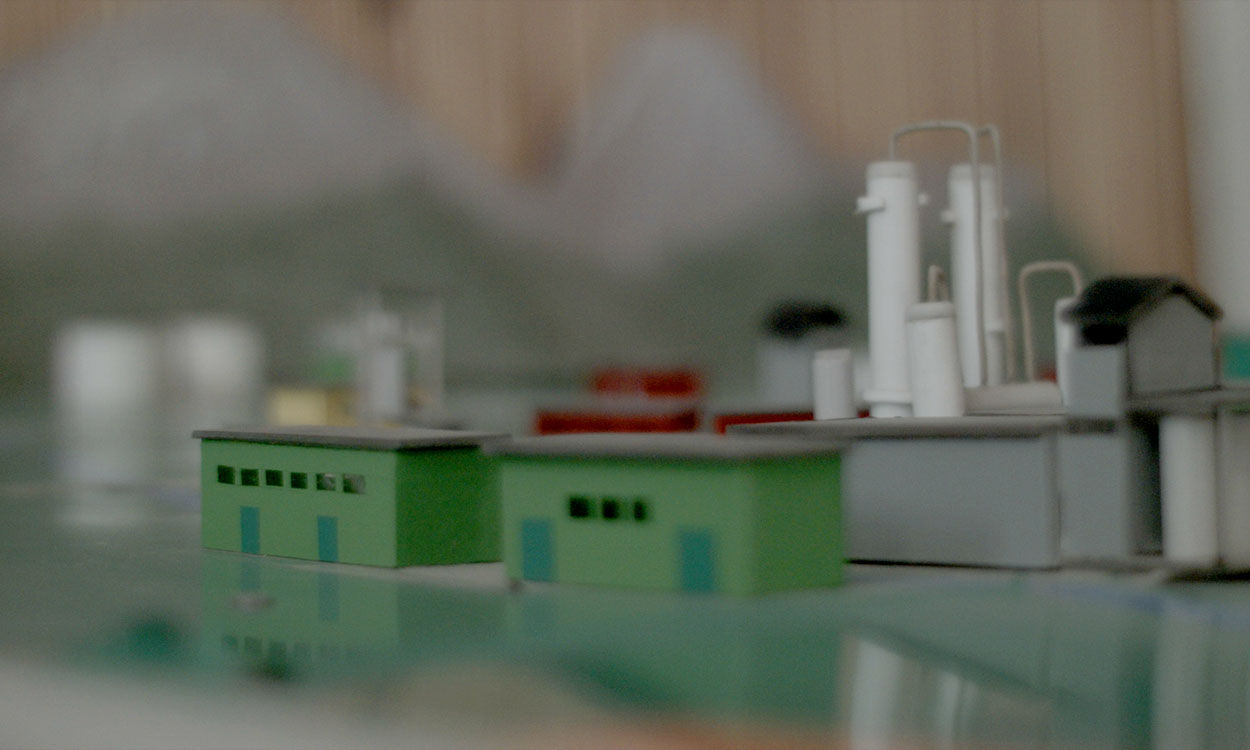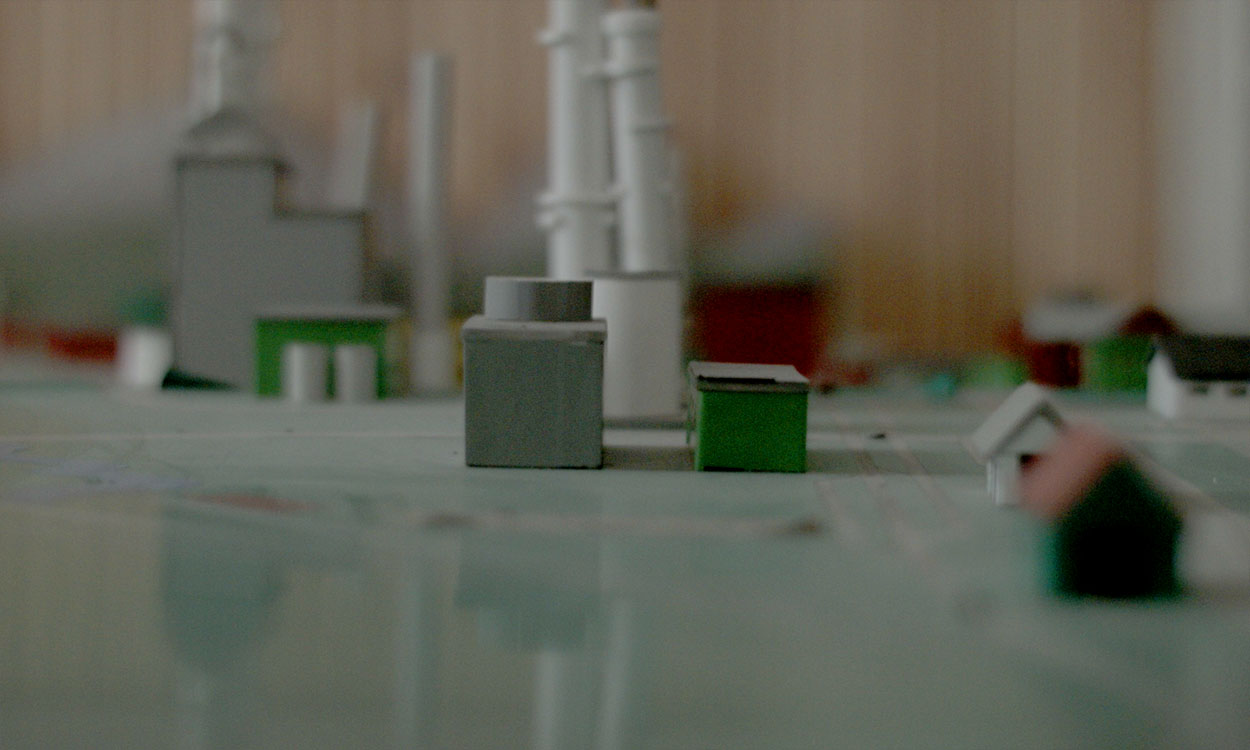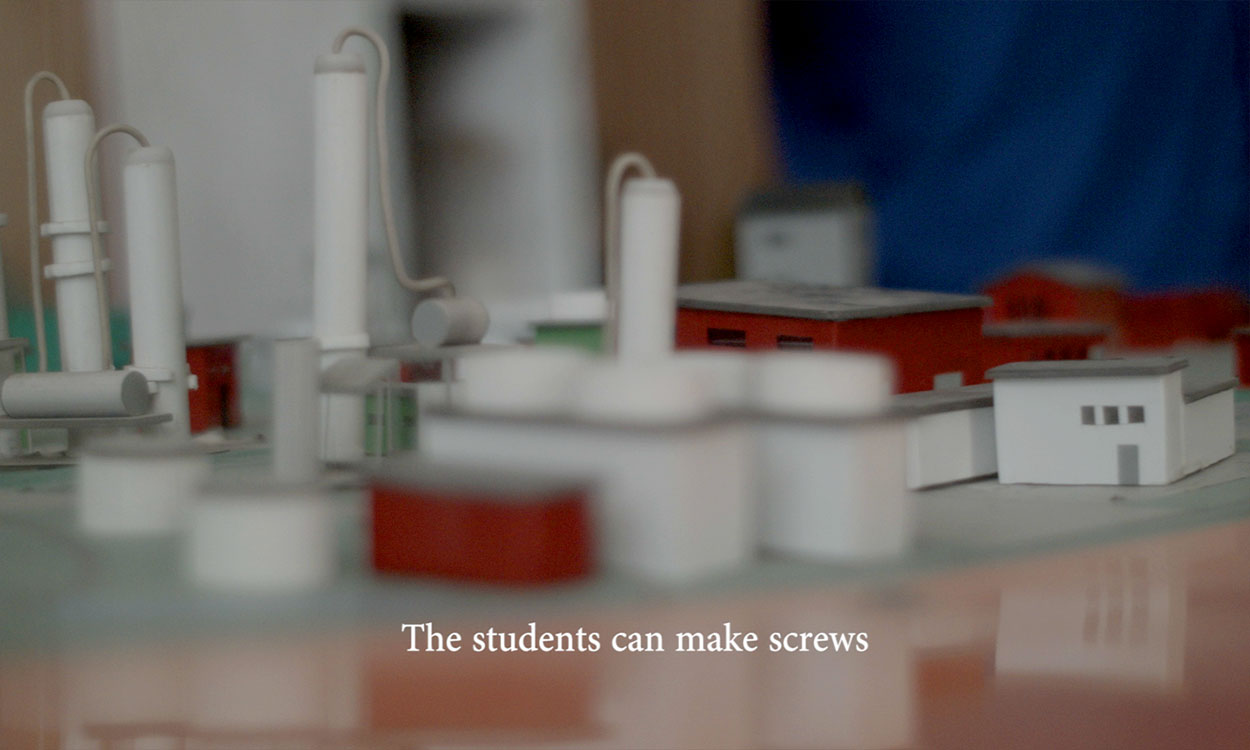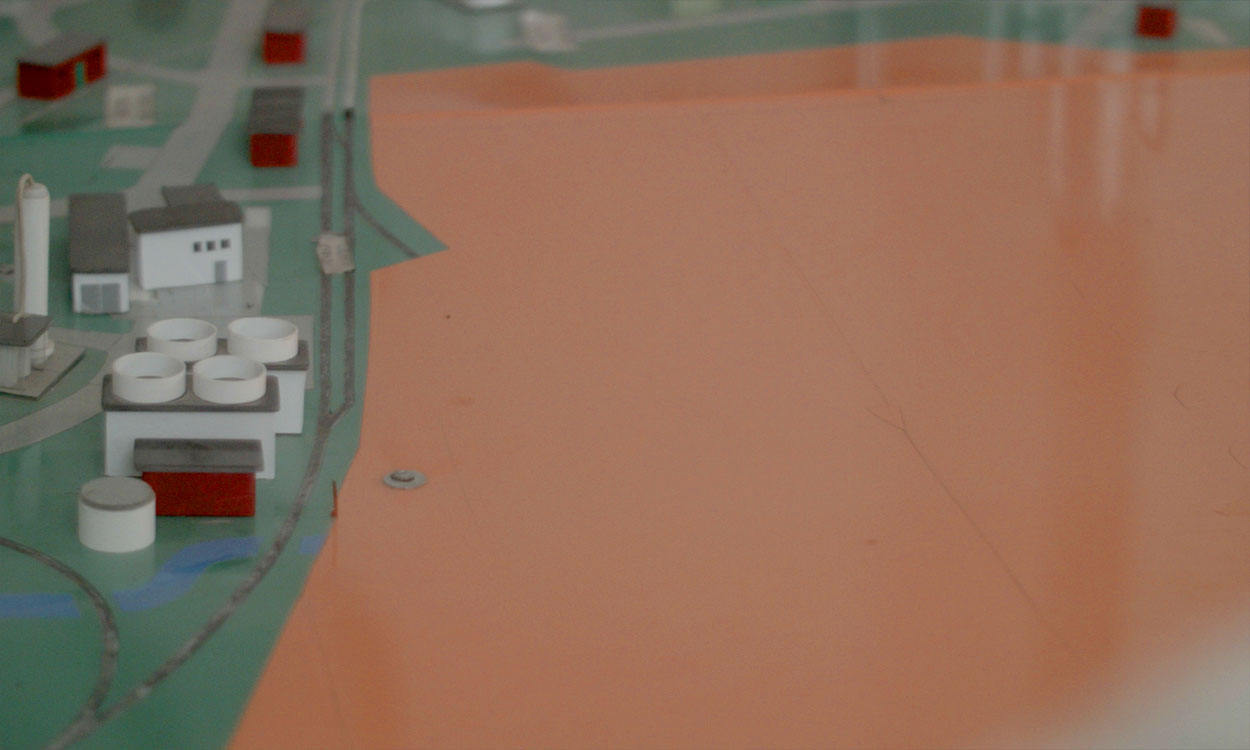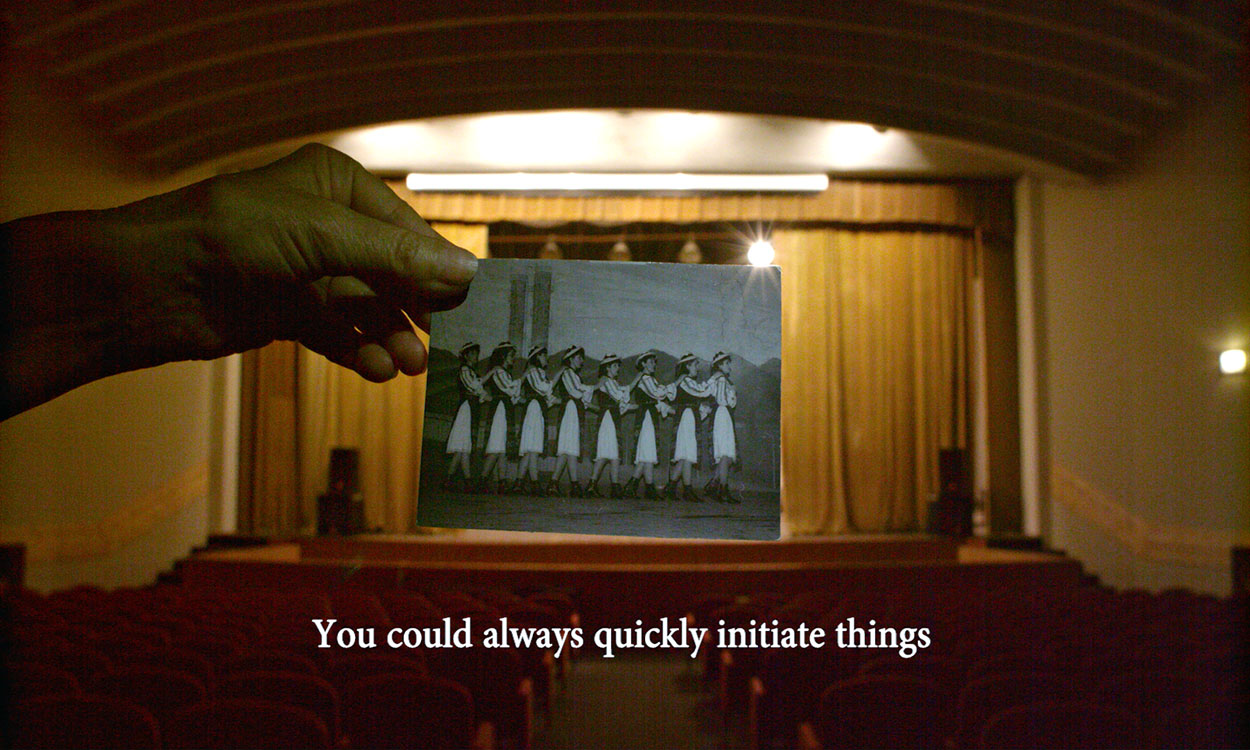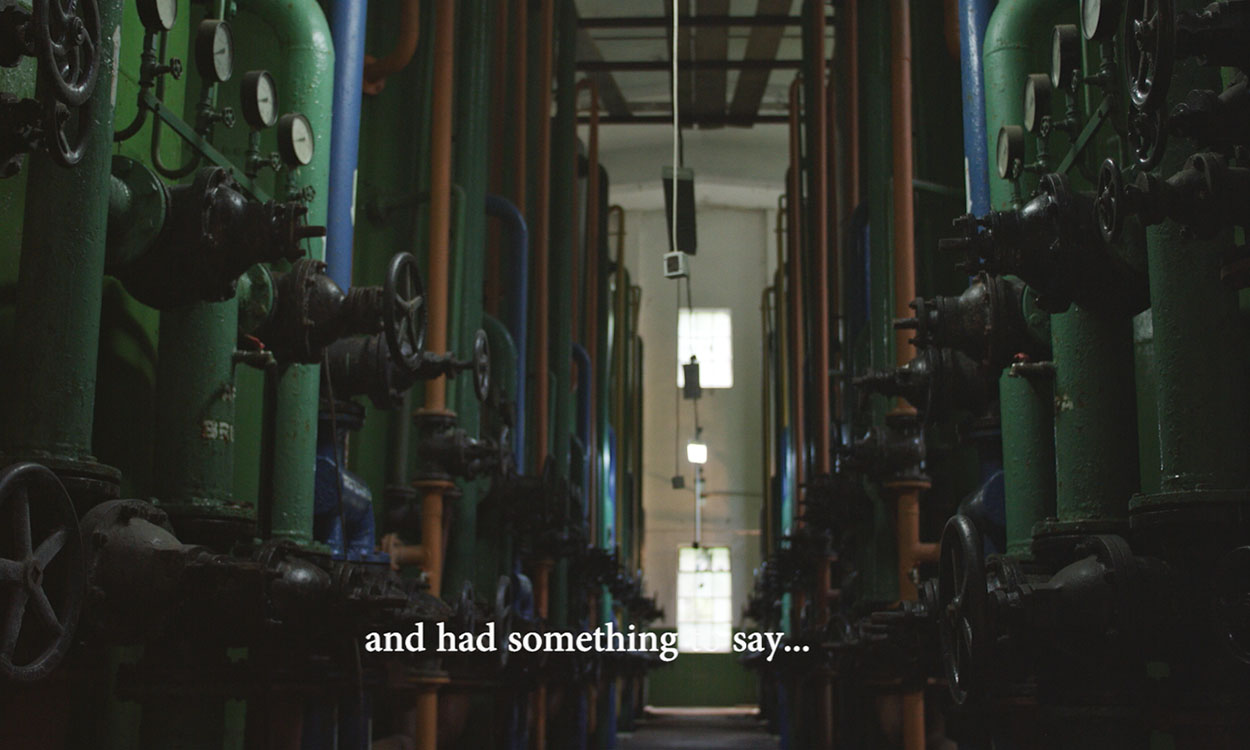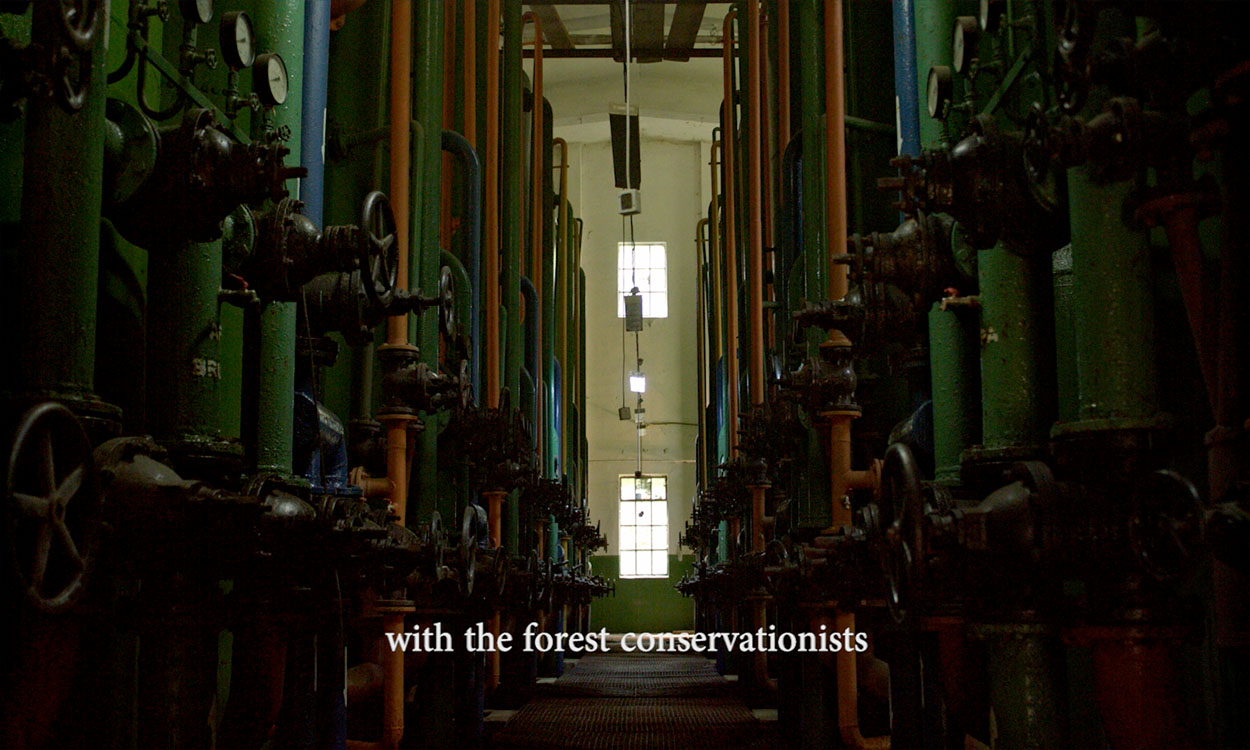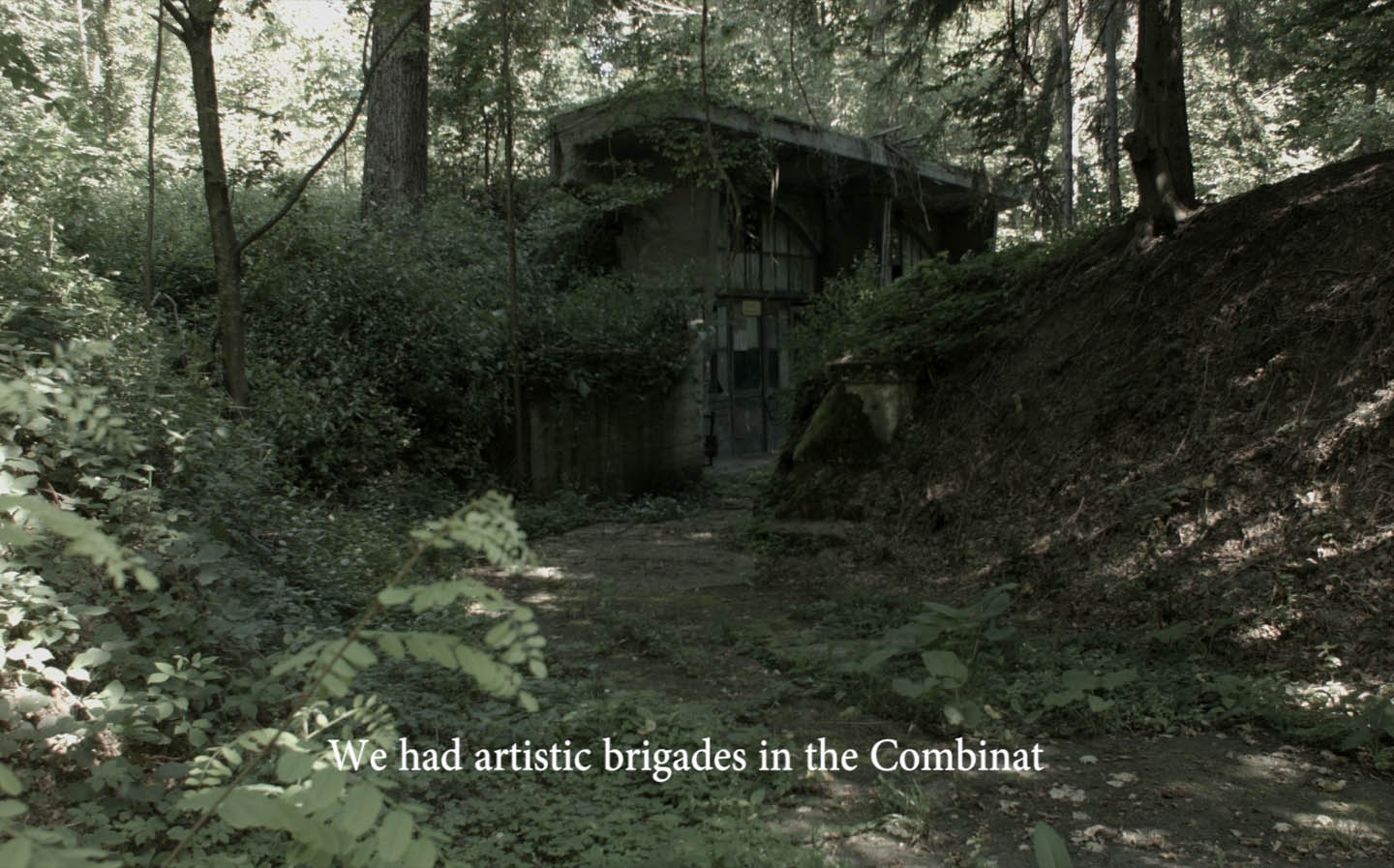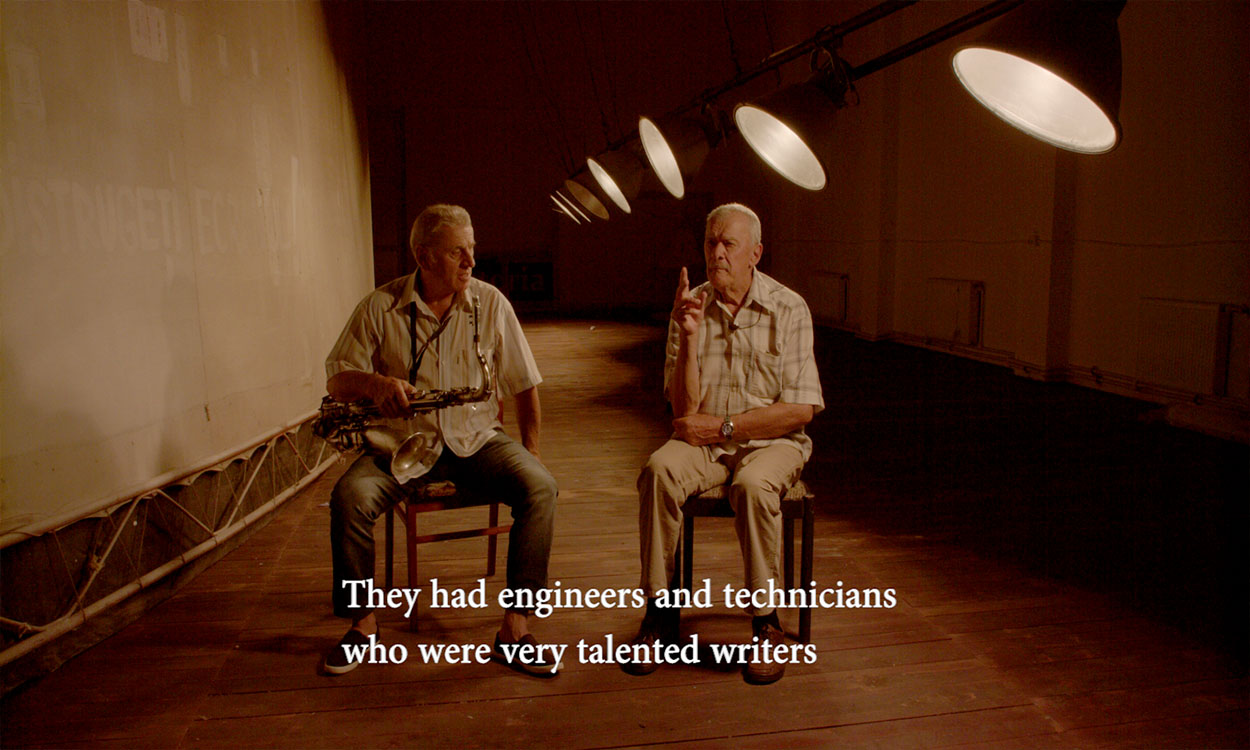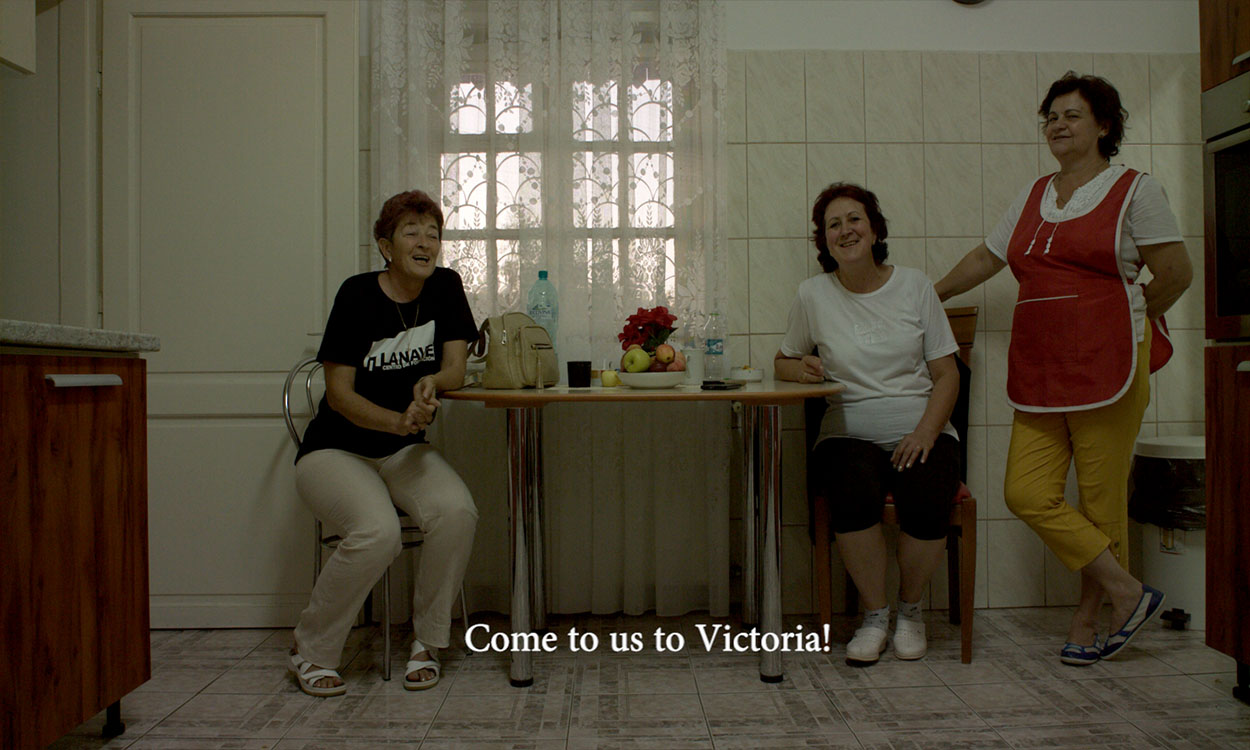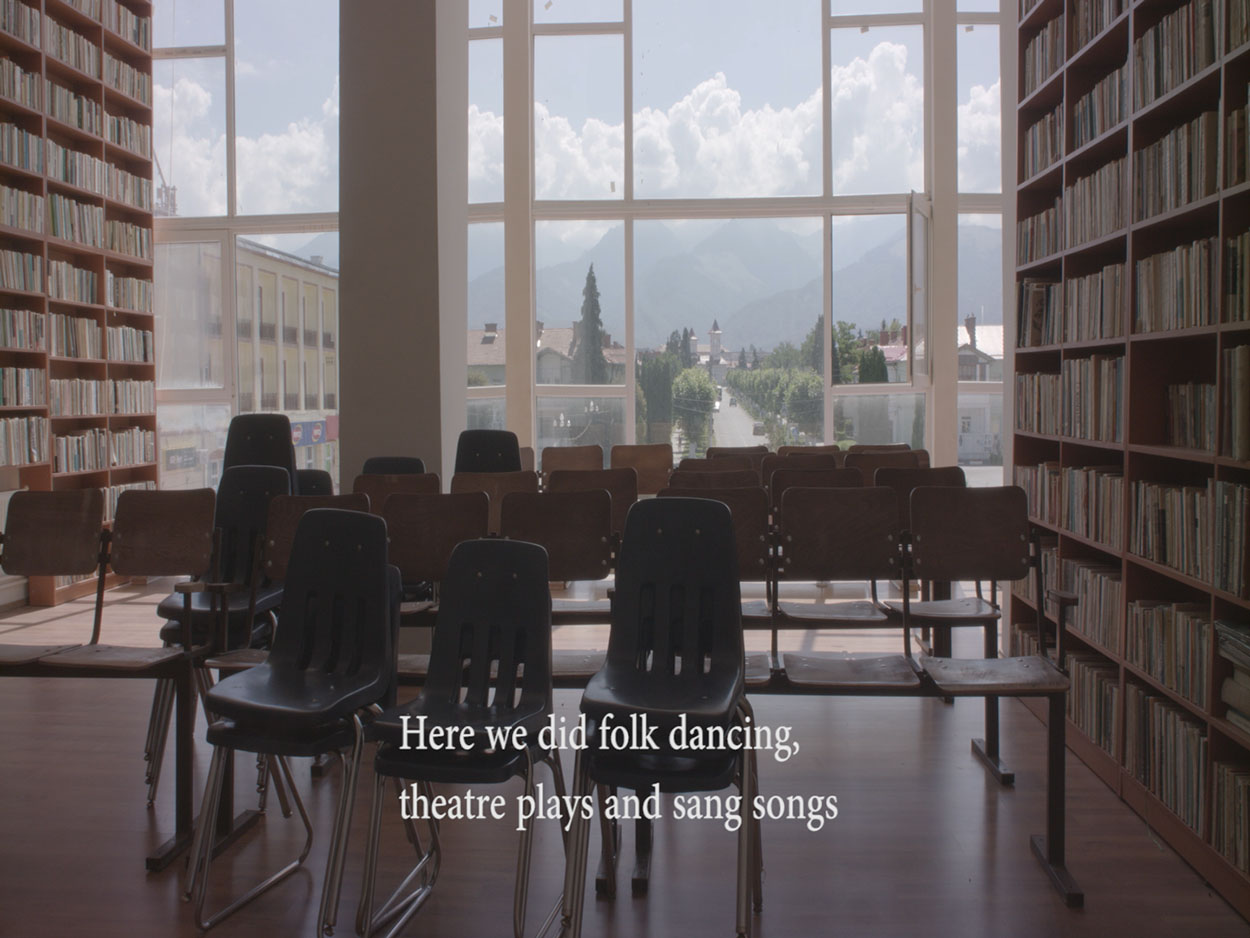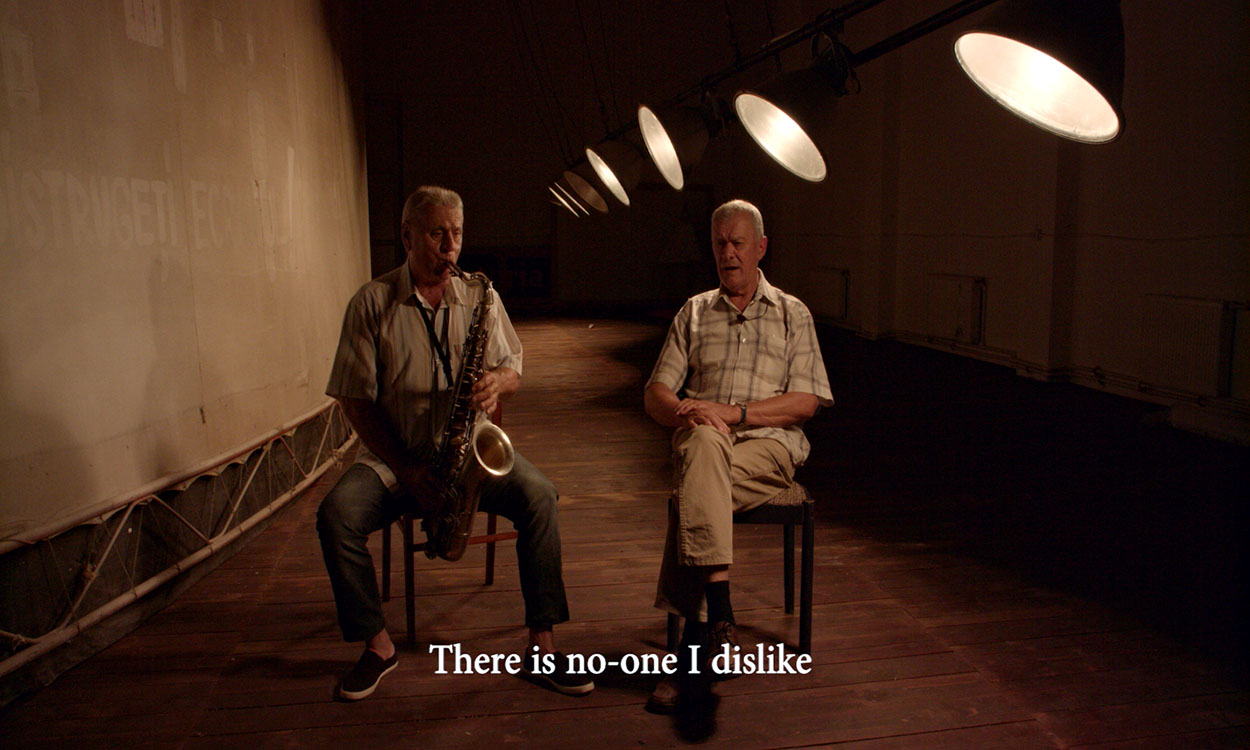We came to Victoria in order to understand the particular intimacies of the former ‘city of youth’. While our focus was mainly on the Cultural House, it soon became very obvious that there was a strong and complex connection between the Combinat (chemical plant), Cultural House and formal educational institutions (primary and secondary school, industrial high school). This project continues our ongoing research into the history, planning and everyday usage (collective and individual) of such institutions. Our methodology is based upon slowly developing a dialogue with past and present actors, participants, in Cultural Houses.
A general introduction into the Cultural Houses in Romania:
Throughout the 50-year period prior to December 1989, almost every city, town and village in Romania had a cultural centre, usually either called a Cămin Cultural or Casa de Cultură: so-called homely places or houses of culture. Their construction materialised the utopian dream of communism to create a communal place where everyone could be both engaged and simultaneously surveyed. No matter how remote or small a village, a local House of Culture, or Cultural Hearth, would be built there so that no-one would be left outside of ‘official culture’. Arguably, throughout the national regions culturally diverse communities and individuals often appropriated these spaces in complex and contrasting ways.
Through their ubiquitous presence, a relatively large amount of state funding and sustained cultural programmes, these institutions played various and prominent roles for both the rural and urban populations during the period of 1955-1989; working alongside and often intersecting with wider state educational programmes and the industrial production sector.
Even though Cultural Houses are generally associated with the post-WW2 Communist Party of Romania (PCR) period the actual history and usage of these institutions have a much longer and diverse lineage that surpasses the localised and communist-era timeline and attributed ideology.
Two main entangled directions can be traced: early socialist ideas of the late 1800s and something of a liberal-sociological programme funded and supported by the state, that peaked in the 1930s.
The early socialist ideas coagulated in various political movements, strikes, newspapers, and ultimately in the formation of the Workers Party that initiated a number of Workers Clubs (Clubul Muncitorilor) and Houses of People (Casa Poporului) throughout Romania at the end of 1800s; evident in the main cities of Bucharest, Iasi, Ploiesti, Galati and Craiova.
Our research into these institutions is woven onto the premise that a re-learning of how to see, and possibly imagine, the subjective and collective experience of the so-called ‘communist past’ (referring to the period of 1945-1989) is necessary in order to deconstruct the multiple filters through which the visibility of Eastern Europe was constructed after 1989, which affects the present site-specific socio-political imagination, with its westernisation, or self-colonisation, tendencies.
Initial observations:
A city built upon a grid system, roses, architecture reminiscent of other places: Chandigarh, India, maybe? Very quiet, very few cars or other vehicles, mountain backdrop interrupted by the newly built church.
Large, international, supermarket chains have replaced and occupied the older Romanian state outlets.
Silence at dusk, promenading on both the main boulevard as well as towards the Combinat.
Signs and firms: “Fluoropolymers”, “Recreation Area. Viromet Swiming Pools. Vacation Land”
Main boulevard with grand houses for the workers, planned and decorated efficiently. From the new church to the Workers Club that was renamed Casa de Cultura (House of Culture) just 2 years ago.
Municipal gardeners cleaning the streets at the break of dawn, cutting the grass, trimming the trees, a tractor breaks the silence… gradually, usefully, collecting the garden waste, a bicycle.
Central City Advertisement:
Come to us to Victoria 24th of August 11pm Fireworks Show
Victoria City’s anniversary 23rd of August Friday
70th year anniversary of the young city
Everybody still refers to the Cultural House as the Club, reminiscence of its former name: The Workers Club. If the Chemical Plant known as Combinat would have still been functioning full blast, the name would have been kept. We/I prefer the Workers Club. It renders visible the connection with the late 1800s socialist history of the Workers Clubs in Romania, and highlights the Club component1 vs the stage, Performance Hall component. Allocating more emphasis and architectural (partitioned) space for the Club Rooms existed in tight connection to a functional transformation of the role of Cultural Houses… the dissemination and distribution of culture changed, witnessing the active encouragement of personal, social, and group participatory activities.
A central question is how do we meet with people so that they share their stories, memories and experiences of living in Victoria and discuss any relationship they may have with the House of Culture? How would these proposed meetings not only help us ‘make sense’ of Victoria, but also form part of a negotiated filmic methodology itself? Can people become central to the filmmaking process?
Fragmented Dialogues
… the students can make screws, here they learn how to use the welding tools…
Andrieana Ciornei: These are our beautiful Fagaras mountains. From east to west these are my coordinates in which I function.
Nicu Diminescu2: The Chemical Plant sustained the whole city, the stadium, the greenhouses.
Mia Diminescu3: Not just the city but also the surrounding villages.
Nicu Diminescu: In fact, the whole area. All of the workers were coming in buses to work in three shifts.
Mia Diminescu: The buses brought the workers from the villages.
Nicu Diminescu: I like the mountains first of all. I liked that it was an extremely young city and that meant dynamism. You could always quickly initiate things. There was an enthusiasm for new ideas and I wasn’t bothered by the authorities so much. All of the parents were hired by the Combinat and a lot of the successful things I did for the school were made in the Combinat.
I wasn’t paid as a football manager but rather they gave me everything I wanted for the school.
Mr. Dumitras: The initial building materials for the Sports Hall were recycled from the old Workers Club, which was opposite the bus station.
When I became the director I built this part; the changing rooms and viewing stands.
Of course this was done with money from the Combinat; but you still had to work for it.
Nelu Timofte, the music teacher: The Cultural House in Victoria was the place for culture.
It had a Performance Hall, library, cinema projections for days per week.
This is where collaborators from within the city and also outside would come.
This is where the future citizens of Victoria would be culturally formed.
Collaborations included the schools, hospital and the Combinat factory.
Talented people from different sections of the Combinat would come and had something to say… they created symposiums, gatherings and round tables for the well being of Victoria.
Nicu Diminescu: At the same time, we had very good relations with the forest conservationists. With the students we would collect hibiscus and other medical plants that we would donate. They would then give us materials that we needed for the school. This is how an organic exchange developed.
Nicu the Saxophonist: We had artistic brigades in the Combinat.
Nelu Timofte: It was an obligation for each sector of the Combinat to have a brigade.
They had engineers and technicians who were very talented writers; the writers would produce scripts that were then rehearsed at the Combinat; the performances were then shown at the Workers Club; the series of shows we called… Dialogues on the Same Stage.
… We were all script writers and directors…
Lili, Andreiana and Lenuta… sing the anthem of Victoria:
In the heart of the country there is a beloved city Victoria
A star from the blue sky
A flower from the infinite
We are mountain climbers
We roam through the mountains
We love our life
We know how to live it
And you the ones who love the mountains
Come to Victoria!
Andrieana Ciornei: Wow, how many emotions I had; my legs were shaking.
You could open the curtain wider and the stage was more open.
Here we did folk dancing, theatre plays and sang songs.
An actor from Brasov would come.
Virgil Rogozea: It should be like this! We should have cultural activities,
dance troupes, there are some actually.
Pop music, folk music, participatory circles for young and older people.
Nelu Timofte and Nicu the Saxophonist sing:
On the rivers of Mures and Tarnave
There is no-one I dislike
On the rivers of Mures and Tarnave
There is no girl that I love
On the river Mures and on the plain
There is no girl that I like
But, I don’t care because my love is more beautiful and full of more love.
NOTES:
- Within the many different types and sizes of Cultural Houses (Union House of Culture, Student Houses of Culture, Youth Houses of Culture, rural Cultural Hearths) there is a certain unity of structure. All of the different models encompassed two main areas, delimitated by the two quite distinct functions: Sala de Spectacole (Performance Hall) and the Club. The Performance Hall which occupies the main and most important space in almost all of the Cultural Houses is fundamentally a theatre space/stage surrounded by seats, more or less a flexible space designed to accommodate either displays or presentations.
Whereas, the Club Room or area is comprised of much smaller spaces of varying dimensions, designed for participatory activities, formal lessons, rehearsals and workshops. Specific activities included: visual arts, photography groups, cinema clubs, radio amateurs, music sessions, popular dance, ballet, conferences, technical activities, theatre and literary circles. - Nicu Diminescu, lives in Timisoara now. He lived in Victoria for 20 years and was the Director of the Primary and Secondary School in Victoria. The main author of a pedagogical experiment in the school which implied a special system of differentiated learning and experimental 3-way notation, he also introduced the idea and the practice of ecology in the area.
- Mia Diminescu, lives in Timisoara now together with her partner Nicu Diminescu. She taught history and participated in the pedagogical experiment for 20 years.

